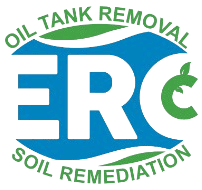How Can I Tell If My Oil Tank is Leaking?

As oil tanks leak from the inside out, many homeowners may not realize their unit is leaking until it is already too late. Tanks that are unprotected and buried in soil will corrode the quickest, followed by those located outdoors, but aboveground and exposed to the elements. Finally, tanks that are protected in the basement of a home are the last to experience corrosion; however, they are still vulnerable to decay over time. It is important to supervise the filling of a tank, as over-filling the tank can also lead to leakage which can contaminate the soil and impact the air quality in a home.
Clues Your Oil Tank is Leaking
The first clue that a homeowner has in discerning if their oil tank is leaking is a sudden change in the heating bill. If the weather has not undergone extreme changes yet the heating bill has begun to rise, it is possible that oil is beginning to seep from the tank. If a homeowner notices this type of change in their heating costs, it is important that they first have their unit checked for water condensation in the tank which can affect heating costs. If the tank is clear of condensation, the most likely culprit is a leak.
A second, more obvious clue that an oil tank may be leaking is the odor of heating oil permeating the home. While the scent can be mild, at first, homeowners who become suddenly aware of the smell of heating oil should immediately make a call to their oil company to have their unit inspected.
When Purchasing a Property
When purchasing a property, potential buyers should look for patches or seals that appear to be covering damage to the tank. No matter the material, no patch job will be sufficient for the long term, and the tank should be replaced or removed immediately. The foundation beneath the tank should be solid and steady so as to maintain the integrity of the tanks position.
An above-ground tank will have visual markers to indicate leakage. In the basement of a house, homeowners can search for old oil tank fillers, vent pipes, gauges or valves which may be hidden under stones, cans, or other debris. A look at foundation walls and floors can demonstrate evidence of oil stains left behind when tanks were removed.
Homeowners can conduct visual inspections of the property to look for clues to the possibility of an underground tank, or for evidence of a previously removed tank that may have left contaminated soil and water in its wake. Prior to any visual inspection, homeowners can consult with local oil companies to uncover any previous deliveries to the address. Outside, a homeowner can look for areas of the property where there is no growth, areas that appear to have been excavated and refilled, and, more drastically, small pools of oil.
Protect Your Investment
Any oil tank has the potential to eventually leak, and this is chance that homeowners are increasingly unwilling to take. ERC will remove any tank and customers will experience the peace of mind that comes with knowing, ahead of time, what the final cost will be, due to our flat rate policy for removal and remediation.

